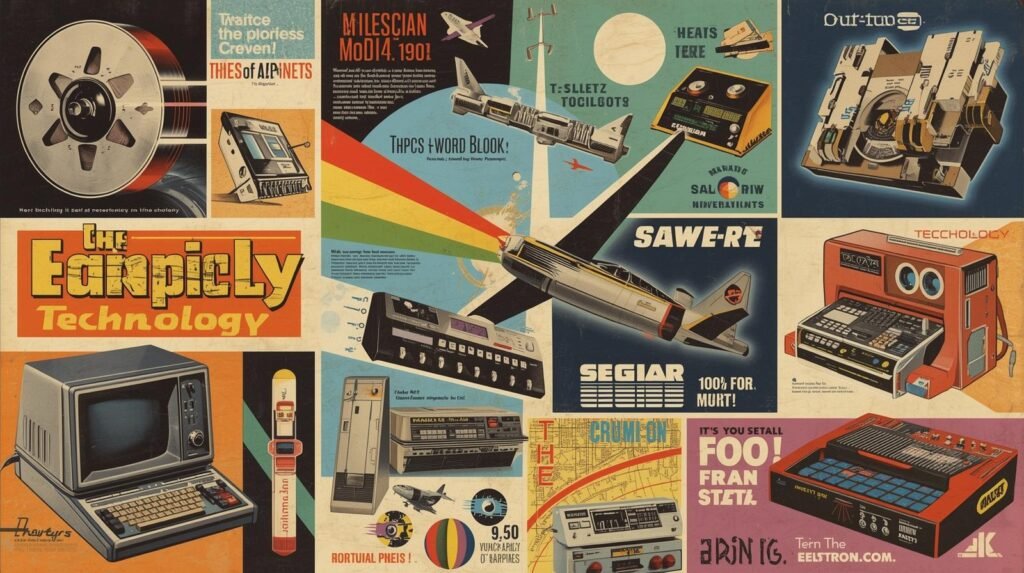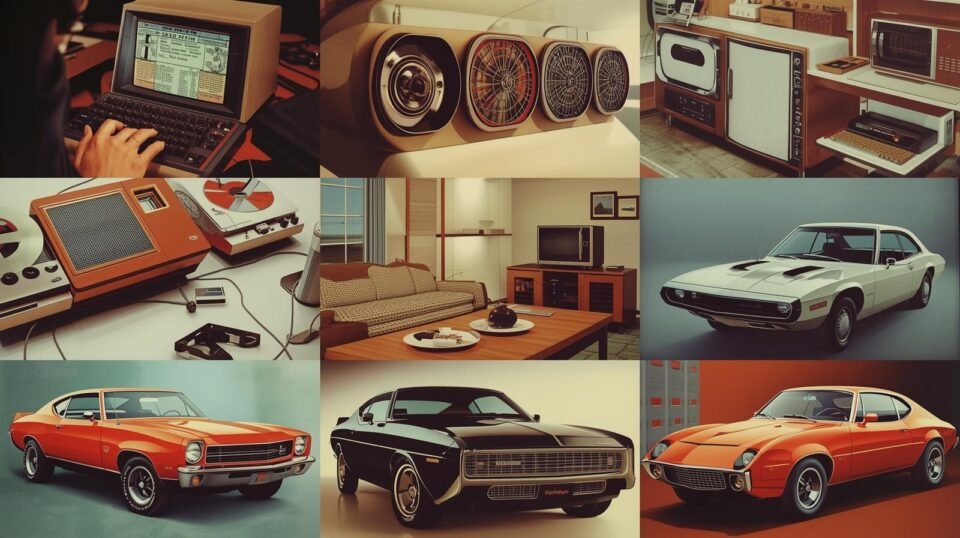Introduction
The1960s Technology was a decade of transformation, where the world moved from traditional living into an age of groundbreaking innovation. The Cold War, the Space Race, and rapid cultural change fueled advancements that redefined everyday life. However, the challenge was that many of these innovations were expensive, limited to certain regions, and accessible only to the privileged. This created a gap between those who enjoyed the fruits of technology and those who remained untouched by it.
Despite these challenges, 1960s technology became the steppingstone for the modern digital age. Computers, satellites, color television, and medical advances all emerged during this decade, shaping how we live today. To understand our smartphones, the internet, and modern healthcare, we need to trace their roots back to the inventions of the 1960s.
The Rise of Space Age Technology
The 1960s marked the height of the Space Race between the United States and the Soviet Union. The problem was not just about science but about political dominance. Each country wanted to prove its superiority by conquering space.1960s technology
NASA made significant progress, leading to the Apollo missions that eventually landed humans on the moon in 1969. Satellites like Telstar transformed communication, enabling live television broadcasts across continents. However, only governments could afford such expensive space technology, leaving ordinary people as spectators rather than participants.
The solution came decades later, as the innovations of the 1960s laid the foundation for affordable satellite communication, global broadcasting, and eventually GPS.1960s technology
Computers and Electronics in the 1960s
Computing in the 1960s was revolutionary but limited. The IBM System/360 mainframes dominated industries, while smaller, more affordable machines like the DEC PDP-8 made computing accessible to universities and labs. The replacement of vacuum tubes with transistors made computers smaller and more reliable.
The problem was cost. These machines were so expensive that only governments, corporations, and research institutions could afford them. Ordinary businesses and households remained far from digitalization.
The long-term solution emerged later. By proving the potential of computers in business and science, the 1960s sparked the journey toward personal computers and eventually the laptops and smartphones we use today.
Communication Breakthroughs

In the 1960s, communication technology experienced a dramatic leap. Touch-tone phones replaced rotary dials, making calling faster and more efficient. Satellites allowed for real-time global broadcasts, including historic events like the Apollo 11 moon landing.1960s technology
The problem was infrastructure. These systems required expensive installations, and many parts of the world were left without modern communication.
But these developments laid the groundwork for the interconnected digital world. Without the 1960s, there would be no internet, no mobile phones, and no global social networks.
Household and Consumer Technology
The 1960s brought technology into homes, changing entertainment and daily living. Color television became a symbol of modern luxury, while microwave ovens began appearing in kitchens. The invention of cassette tapes transformed how people listened to music, making it portable and personal.1960s technology
The issue was affordability. In the early years, these were luxury items available only to wealthier households. Many families continued with black-and-white TVs and traditional cooking methods.1960s technology
Yet over time, these inventions became mass-market products. Today, almost every household enjoys the benefits of affordable appliances that began their journey in the 1960s.
Medical and Scientific Advances
The 1960s were also marked by groundbreaking medical achievements. The world witnessed the first human heart transplant in 1967, led by Dr. Christiaan Barnard. Advances in medical imaging and portable medical devices improved healthcare diagnosis and treatment.1960s technology
The problem, however, was accessibility. These technologies were available only in advanced hospitals, and millions of people across the world remained without proper healthcare.1960s technology
The solution unfolded later, as these innovations inspired global medical progress. Today’s advanced surgeries, imaging tools, and portable devices owe their origins to the pioneering spirit of the 1960s.
Transportation Technology in the 1960s
Transportation evolved rapidly in the 1960s. The Boeing 727 brought affordable jet travel to the masses, while the prototype of the Concorde supersonic jet symbolized the future of high-speed travel. In the automotive world, muscle cars like the Ford Mustang became cultural icons.
The problem was inefficiency. Cars were fast and stylish but consumed enormous amounts of fuel and lacked proper safety measures. Air travel was still expensive for the average family.
The solution came gradually as lessons from the 1960s helped shape safer, more efficient, and more affordable transport systems in the decades that followed.
Military and Defense Technology

The Cold War fueled massive investment in defense. The 1960s saw the development of nuclear submarines, advanced missiles, and spy satellites. These technologies gave nations greater military power but also raised the terrifying threat of nuclear war.
The problem was fear. Instead of feeling safer, people lived with constant anxiety of global destruction.
Yet, some of these technologies eventually found peaceful applications. Satellite imaging, for instance, became vital in weather forecasting and environmental monitoring.
How 1960s Technology Shaped the Modern Era
Every aspect of modern technology has roots in the 1960s. Computers of that era paved the way for personal computing and artificial intelligence. Satellites launched in the 1960s evolved into today’s GPS systems. Medical breakthroughs inspired advanced treatments and diagnostic tools. Household appliances became cheaper and widespread.
The challenge of cost and accessibility that plagued the 1960s eventually pushed innovators to make technology more inclusive. This lesson continues to shape how modern innovations are scaled and shared globally.
Challenges of 1960s Technolog
The 1960s was not a perfect decade of progress. Key problems included:
- Limited access to new technology in developing nations
- High costs that restricted availability to the wealthy
- Safety standards lagging behind innovation
These challenges remind us that every era of innovation brings both opportunities and risks.
Solution – Lessons for Today
The main lesson from 1960s technology is that innovation must serve people equally. Modern inventors and policymakers can take inspiration from this decade by:
- Ensuring technology is affordable and accessible
- Balancing innovation with ethics and responsibility
- Designing technology with sustainability in mind
By learning from the 1960s, we can avoid repeating mistakes and ensure technology benefits everyone
Conclusion
The 1960s was more than just a decade of style and music; it was a technological revolution that changed the world. Despite challenges of cost and accessibility, the innovations of that era created the foundation for our digital age. From space exploration to medical breakthroughs, from computing to consumer appliances, 1960s technology continues to shape our daily lives.
Without the spirit of innovation from the 1960s, today’s smartphones, internet, global communication, and advanced healthcare would not exist. The decade teaches us that progress must always be balanced with accessibility, responsibility, and inclusivity.
FAQ
1. What was the most important technology in the 1960s?
The Apollo space missions and the development of computers like the IBM System/360 were among the most significant innovations.
2. How did 1960s technology impact daily life?
It introduced color TV, cassette tapes, microwaves, and improved communication through satellites, reshaping entertainment and lifestyle.
3. Which 1960s invention is still in use today?
Computers, satellites, and cassette technology all evolved but their foundations remain in modern devices.
4. How did the Space Race influence technology in the 1960s?
The Space Race pushed nations to innovate in rockets, satellites, and computing, accelerating progress in science and engineering.


